LIST: 10 Socially distant hashtag activism campaigns
Hashtag activism is the use of hashtags to show support for various issues which continued during COVID-19. Here are ten activism hashtags that became prominent this year.
#ShareTheMicNow & #KeepSharingTheMic
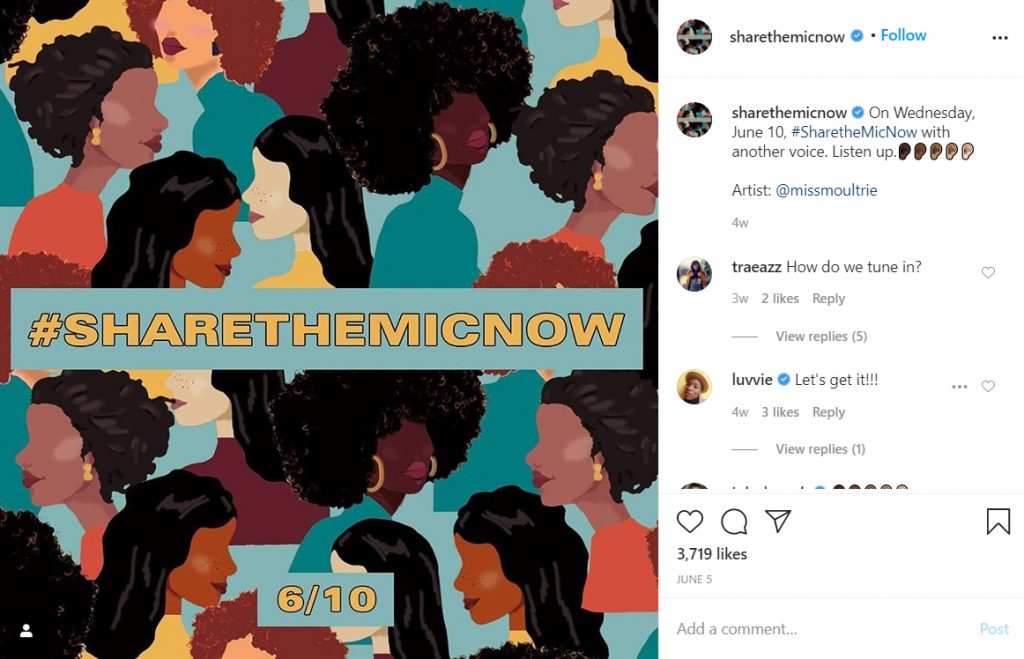
Bozoma Saint John, Luvvie Ajayi Jones, Glennon Doyle and Stacy Bendet started the #ShareTheMicNow campaign. June 10, Black women took over the social media accounts of white women with a dedicated fan base for a day. A statement from the #ShareTheMicNow Instagram page reads, “The intention of this campaign is to magnify Black women and the important work that they’re doing in order to catalyze the change that will only come when we truly hear each other’s voices.” June 11 the account posted #KeepSharingTheMic to continue to lift the voices of Black women.
#BlackoutTuesday
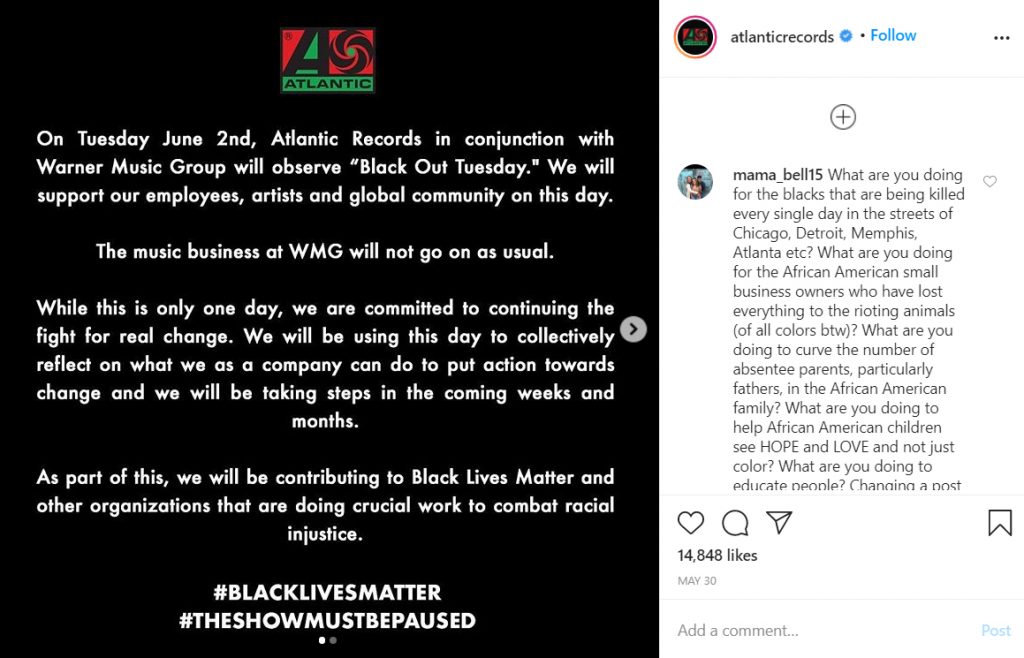
Blackout Tuesday began as an initiative by individuals in the music industry to ‘blackout’ regular or new content June 2, the Tuesday after George Floyd’s death to stand in solidarity against racial injustice. Many vowed to use it as a space to mute themselves and amplify black voices. Blackout Tuesday became controversial when users on social media posted a black square on their timeline and tagged #blacklivesmatter instead of #blackouttuesday. When incorrectly tagged, the #blacklivesmatter tag contained black squares instead of Black Lives Matter content. The tag #blacklivesmatter is used by organizers to communicate with one another in a quick an organized way.
TikTok Teens vs Trump Rally
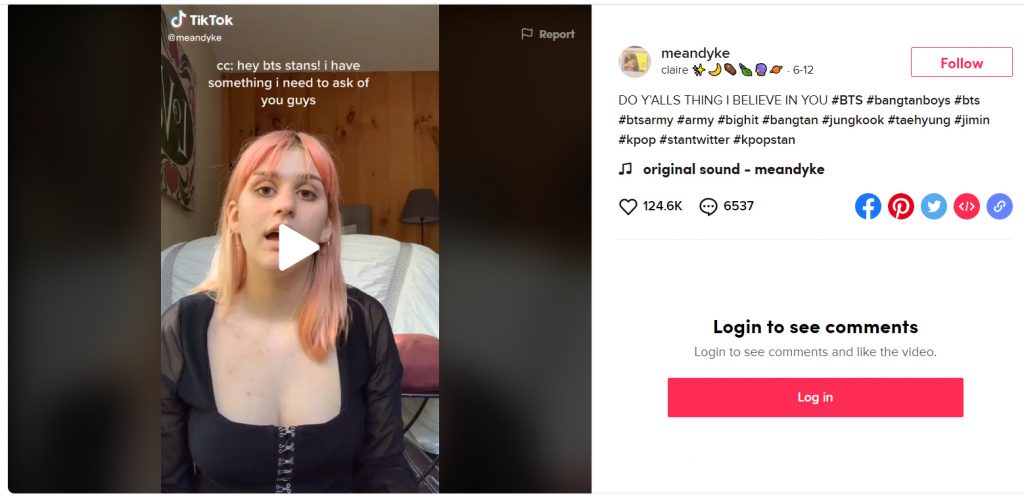
The official Twitter account for President Donald Trumps campaign tweeted June 11 that anyone could receive free tickets to the Tulsa rally with online registration. The event was hosted at the BOK Center which seats approximately 19,199 people. Users on the social media app TikTok inflated the registration numbers to show that more people signed than the arena had capacity. Brad Parscale stated on Twitter that a million people registered for the rally. Less than 6,200 people attended the rally June 20.
#AloneTogether
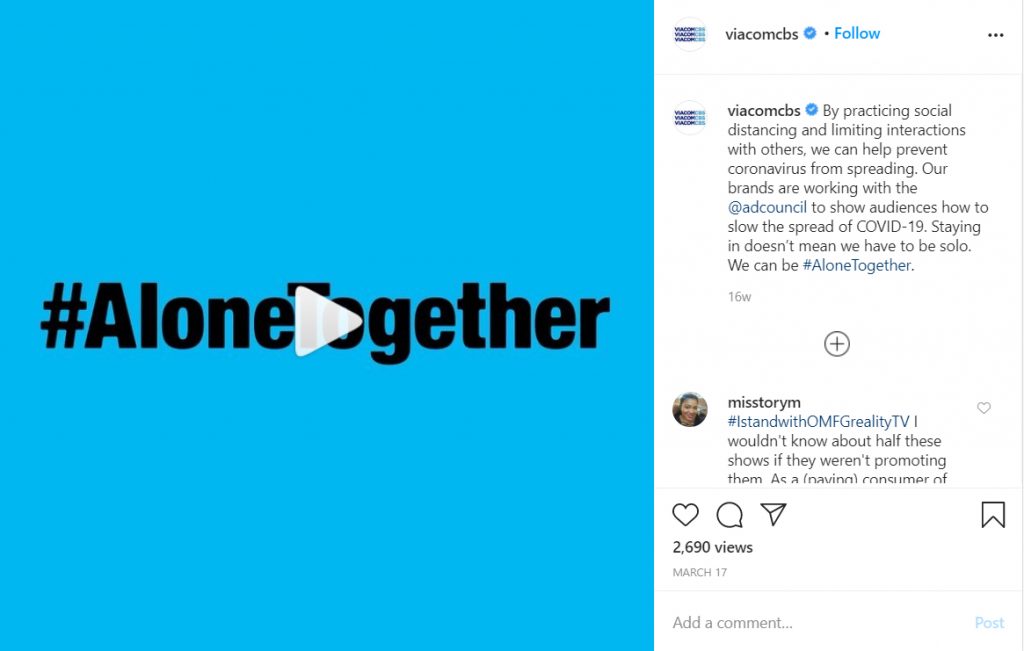
ViacomCBS launched the #AloneTogether partnership campaign with Ad Council on their Twitter account on March 16. The campaign promotes the importance of social distancing. Networks under the ViacomCBS and Ad Council umbrella such as MTV and Comedy Central are involved in the promotion of #AloneTogether.
#Vogue & #Essence Challenge

Salma Noor created a Vogue Magazine cover edit with a photo of herself marking one of the first #VogueChallenge edits. June 4, editor-in-chief of Vogue, Anna Wintour, sent a letter to her staff stating, “Vogue has not found enough ways to elevate and give space to Black editors, writers, photographers, designers and other creators.” Thousands of mock-up covers were created in response of the leaked staff apology. Some individuals noted that the mock-up covers allow for publicity that Vogue did not pay for. Vogue then reposted images from the #VogueChallenge on the Vogue website. The #EssenceChallenge was used by some to highlight the magazine for the work it does to empower Black women.
#StayHome & #OpenSafely
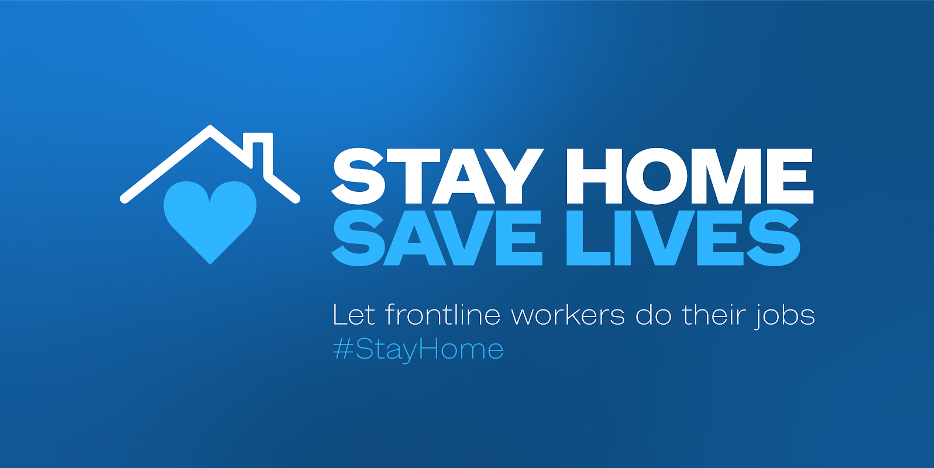
Both campaigns are led by a team of over twenty medical professionals from various fields and political views. The #StayHome campaign urges individuals to stay home to slow the spread of COVID-19. The website states that by doing so, people will allow essential workers to ‘do their jobs.’ The #OpenSafely campaign is run by the same group of medical professionals in conjunction with the #StayHome campaign.
#OpenItUp & #OpenUp
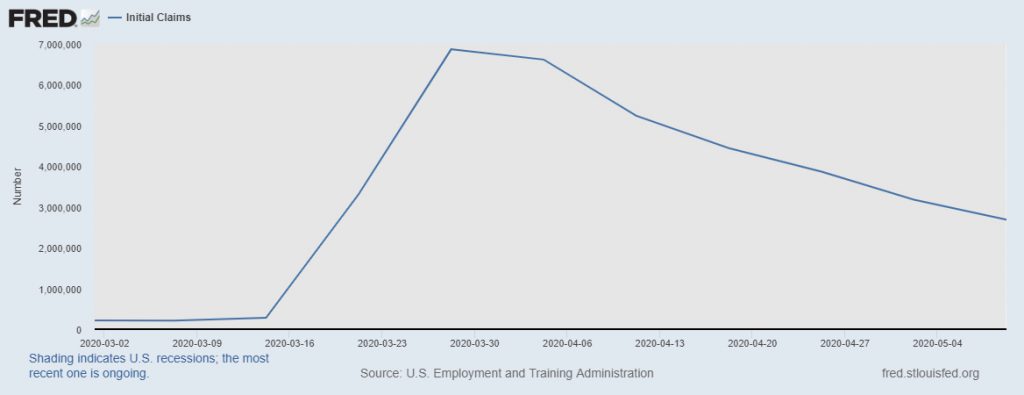
This hashtag began to surface at the end of April 2020 when the unemployment rate rose to 14.7% from 4.5% in March 2020. Individuals protested the lockdown and social distancing recommendations by the CDC. People all over the world physically protested the closures of jobs and businesses in Europe, Latin America and the United States.
#PublishingPaidMe
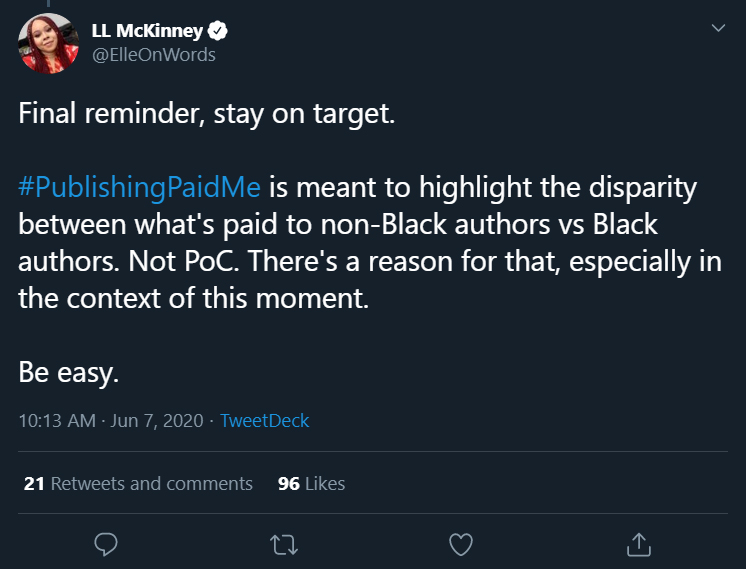
#Publishingpaidme began at the beginning of June by author L.L. McKinney. The hashtag began trending on Twitter to highlight the differences in financial compensation between non-Black vs Black authors. Authors on Twitter began tweeting specifics of how much money they received for published books. Some even explained the compensation between different titles of books.
#Say__Name
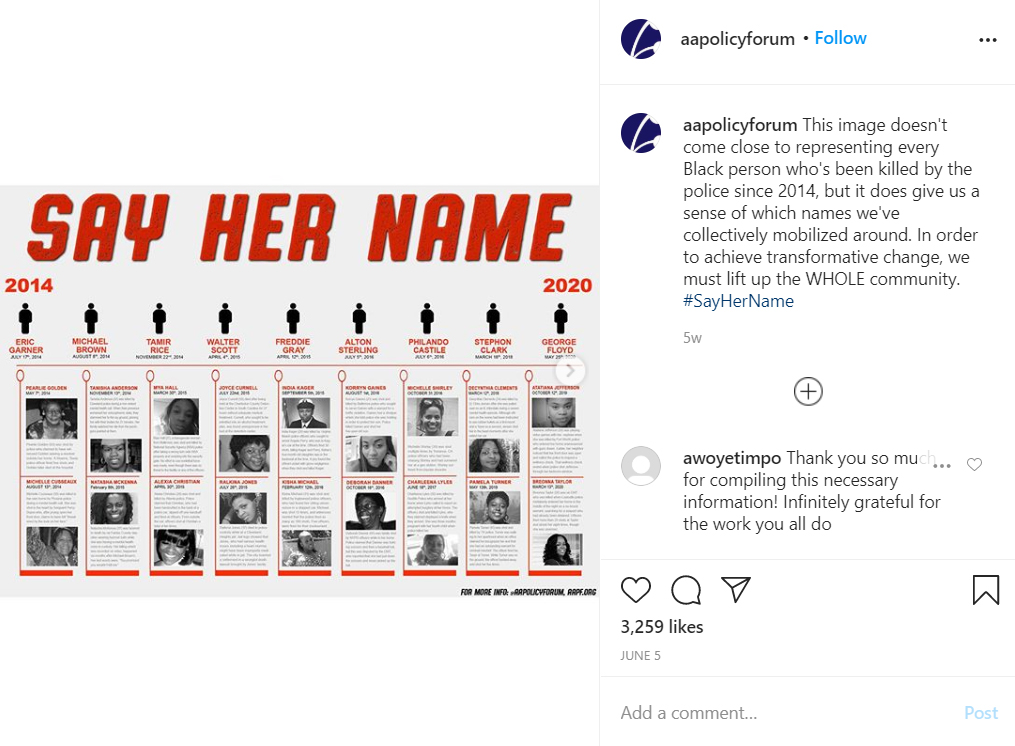
The hashtag #SayHerName was started in 2014 by The African American Policy Forum (AAPF) to bring attention to the deaths of Black women and girls due to police violence. The timeline begins with the death of Michelle Cusseaux and continues now with the death of Breonna Taylor. After the death of George Floyd, the hashtag #SayHisName and #SayTheirName began to appear in addition to the original. There is some controversy because #SayHerName is becoming overlooked by the most recent versions.
#AmplifyMelanatedVoices
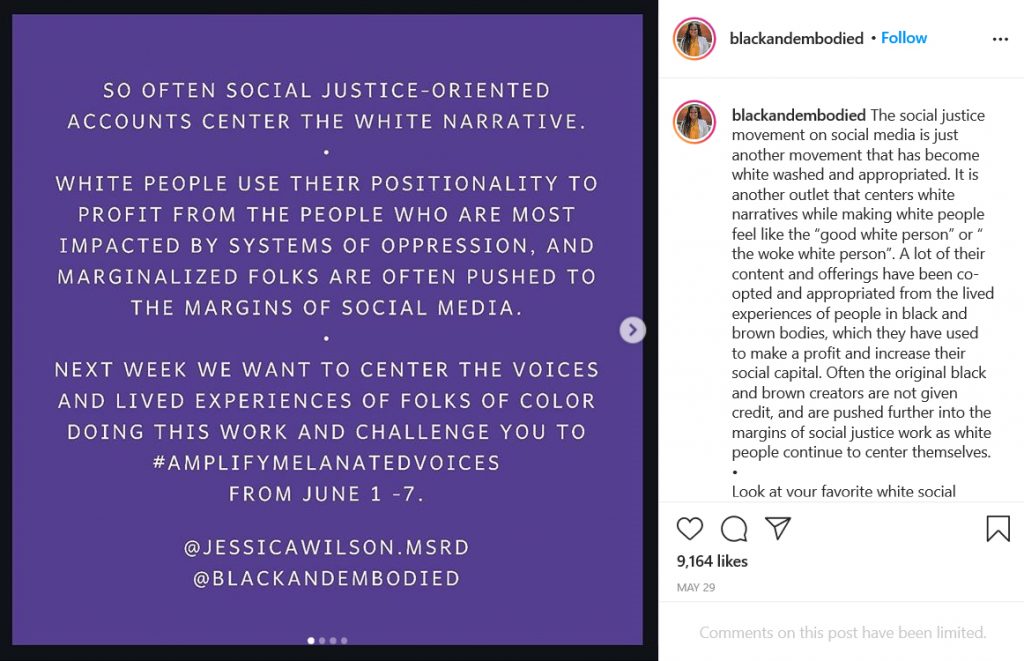
Alishia McCullough and Jessica Wilson started the #AmplifyMelanatedVoices challenge. The challenge was from June 1 to June 7. The goal of the challenge was to highlight the social justice work of Black and people of color. The challenge had individuals mute the accounts of white individuals whose accounts focus on social justice, highlight accounts of Black and people of color in the stories and newsfeed and on June 7 reflect on the effects of the challenge.

